Ollie, the dog who bolted when his person was killed by a motorist, was found safe a few days later. That is the only silver lining: two kids who have been robbed of their father have been spared the additional trauma of suddenly losing a pet at the same time.
The crash happened at 151 Phoenix Street in Vernon. If you’re asking why Andrew Aggarwala was not on the sidewalk, the answer is easy: there are no sidewalks.
If you are asking why Aggarwala was killed on Tuesday, it was because Philip Holmes drove a Hyundai Sonata into him. Holmes, 41 of Somers, took no responsibility for killing the Vernon man. For days, police acted coyly, neither naming the assailant nor providing a description of the vehicle. They knew the vehicle they were looking for, as it was reportedly spotted on the same street the day after it was weaponized, and it still had Aggarwala’s blood on it. One news site said there was also hair on the vehicle. The police waited until the following Monday to arrest Holmes at his job in East Granby; according to the Journal Inquirer, Holmes has been charged with “misconduct with a motor vehicle, evading responsibility in a death, possession of a controlled substance, and use of drug paraphernalia.” Other news sources have reported similar charges, though using less exact language. Holmes has been reported as telling police he thought he hit a mailbox and would have stopped had he known he killed a person.
[As an aside, I have witnessed over the years as heroin users from the suburbs and exurbs (known by membership stickers on their cars) snort and shoot up on otherwise quiet side streets in Hartford, then go directly onto I-84 while under the influence. This is not rare and you — whether on foot, bike, or in a car — should be horrified by this danger. Destigmatizing addiction and opening safe, supervised injection sites throughout the state would go a long way to helping people make better choices.]
The news have gone into detail about the lengths investigators have gone to on this case.
The preventable death of Andrew Aggarwala, age 44 of Vernon, received more than the average amount of news coverage, perhaps because he had all the trappings of being relatable to news consumers: attractive family guy living in a nice middle class neighborhood engaged in a wholesome activity — walking the family’s dog — at the time of his death.
Andrew Aggarwala was not the only pedestrian needlessly killed by a driver in November.
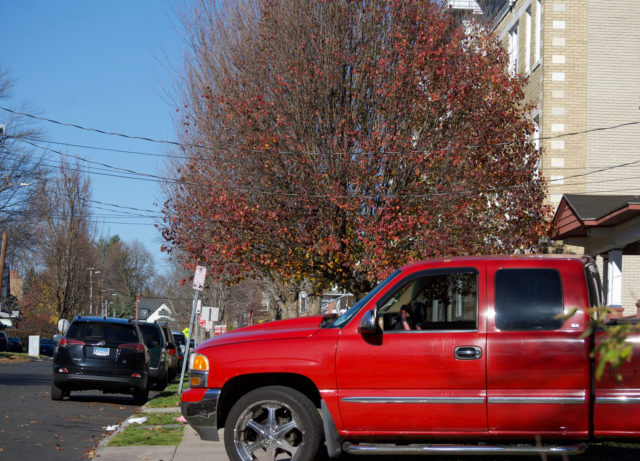
Last month, motorists killed at least¹ seven pedestrians and 1 cyclist in Connecticut. November tied January for the most deaths of vulnerable road users in 2020. The rate of road violence is moving in the wrong direction.
These deaths go widely undetected until someone described in the newspaper as a “salt of the earth” person gets killed. Then, people sit back up for a minute — but only a minute — and pay attention. But it should not matter if the victim is an amazing super Dad soccer coach or if the victim is a scumbag. Everyone should be able to walk their dog, bike home from work, or walk back from the bar without getting murdered by a driver.
This year, the news never identified many of the killed pedestrians by name, and in some cases, never reported on their preventable deaths at all. I will try to do justice for those who died, providing as much information is available to members of the public through databases, obituaries, and news sources.
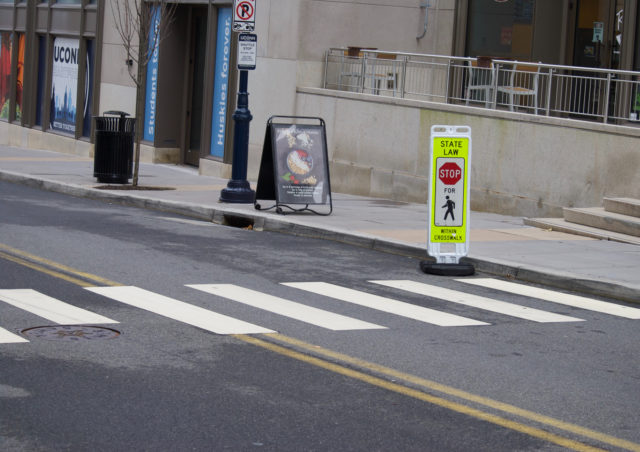
In Meriden, around 2:20 PM on November 5, Harold Bell, 56, was killed by a motorist. This happened near the victim’s home. Bell, dubbed the “Mayor of Old Colony Road,” had one of the more honest obituaries I have seen: “Harold, Tex, Cowboy, Bell died in a brutal hit and run.”
The cowardly motorist left the scene, taking no responsibility for his/her actions.
An online fundraiser set up to cover the victim’s funeral and burial arrangements shares this: “Harold, for all of his gifts, had very little in the way of material possessions. These things meant little to him. What mattered to Harold were helping people, and admiring the beauty of the natural world around him.” Bell’s obit reads: “Our brother, friend, confidant, handyman, mechanic, and helper was meek and small in status but he was H-U-G-E in humbleness and heart. Harold leaves behind the friends, and acquaintances he’s made in the Old Colony Road community. Our deepest condolences go out to all of you.”
Michael Bajus, Jr., 19, was pedaling his bicycle on Harvard Avenue in Stamford when we was struck by two drivers and killed. He was first hit by Michael Letinsky, driving a 2005 Cadillac; this collision threw Bajus from the bicycle. Then, he was run over by John Reese, who was driving a 2006 Infiniti. Reese fled the scene before talking to police. This happened just before 10:30 PM on November 6. As of publication, it does not appear that police charged either driver who shares the responsibility for killing this young man.
The victim’s obituary is heartbreaking: “Michael was an incredibly intelligent and humorous young man. He was deeply committed to practicing kindness, patience, and acceptance and his comprehension of these values were beyond his years. His archive of witty and sharp facts stemmed from his natural curiosity and his love of learning. He loved long walks, gaming, anime, learning, and traveling.” He died just days before his 20th birthday.
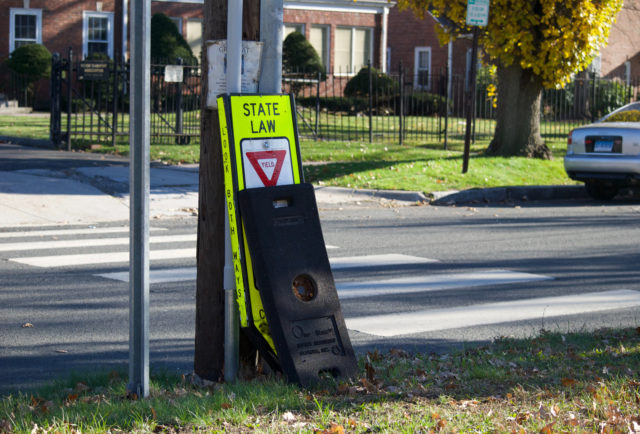
On the evening of November 7, a Ford F350 Super Duty driver hit two people while making a left turn onto an I-91 entrance ramp in Fairfield. The pedestrians, both age 69, were using an unmarked (legal!) crosswalk in an area described as dark and without lighting. Both victims were transported to an area hospital. The male pedestrian had minor injuries; the female died. There was no news coverage of this preventable death, and seemingly no obituary; therefore I am unable to share anything about the woman who passed aside from her age and that she was the victim of deficient infrastructure and a driver not looking carefully enough before making a turn.
On November 16 — a clear morning — just before 9, Joshua Molyneaux, age 21, was hit and killed by an 80-year old driver who reportedly was “uninjured and released from the scene.” It is not newsworthy that the driver was uninjured — he was inside the vehicle, protected by a metal cage. I have seen no indication that the driver was arrested or had his license revoked.
The victim was doing landscaping in Waterford when struck and this was Molyneaux’s first day on the job. He was days away from his 22nd birthday. According to his obituary, Josh “was a sweet and fun loving person. He was always willing to help someone out no matter who they were. Josh was a very hardworking kid who loved life. If he wasn’t on facebook, he was playing xbox or playstation with his friend […] Josh loved to fish, cut wood, and playing with his nieces and nephews.”
Later that day in neighboring New London, a motorist killed Patrick Furey, 59. This happened at 5:50 PM at Broad and Channing Streets. If there is any information about the driver’s identity or an arrest, I have not seen it.
According to his obituary, “Pat was known to be a trivia wiz; whether it was music, movies, or sports he almost always knew the correct answer. He had a strong passion for music attending many live concerts and writing reviews for Soundwaves magazine. Patrick relished time with friends and family whether it be golfing, making ravioli, traveling, parties, or sharing his love of baking. He was a member of the Knights of Columbus Mystic Council volunteering at many of their events over the years. He spent countless hours caring for his beloved rescue animals. His smile and warm hugs will be missed by all who had the pleasure of knowing him.” He was described as “a loving husband, brother, uncle and surrogate father.”
November 20 was another day when two pedestrians were needlessly killed.
A man driving a sedan on Canoe Brook Road near Madison Avenue in Trumbull fatally struck Lisa Cimmino, 57. No charges were filed. She died at the hospital around 5 PM, but it is unclear exactly when the crash happened that day.
“Lisa was a graduate of Trumbull High School and was a teacher and paraprofessional for the Trumbull Board of Education with almost 30 years of service,” her obituary tells us. Her brother, cousins, and friends will mourn her death.
In Waterbury, a motorist driving a Honda Civic struck and killed a 41-year old male who has not yet been identified publicly. It does not appear that the motorist responsible for this preventable death has been charged. The collision occurred at 9:11 PM; the victim was pronounced dead on the scene at 9:32 PM. This happened at 62 Chase Avenue, which is on the same block where a pedestrian was killed in March 2020.
At least 52 pedestrians and six cyclists have been killed in collisions with motor vehicles in Connecticut this year.
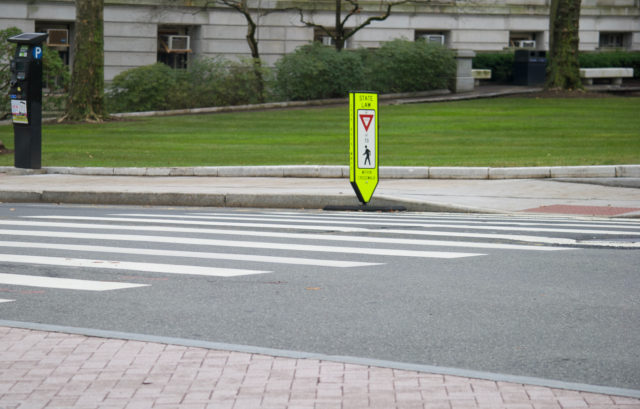
- Is this really the best way we can keep pedestrians and cyclists alive?
- Does this do enough?
New London’s incoming pedestrian bridge is a wolf in sheep’s clothing. It sounds like something we should want — maybe because “pedestrian” is in its name — but it’s deceptive. If you don’t pay attention to the goings on in that part of the state, you might think that the bridge would be a standalone spanning the Thames River, giving people on bike and foot access to Groton that does not require moving right next to vehicles on the Gold Star Bridge. That would still be a lot of money to drop on a redundancy, but feels purposeful somehow. That’s not the project.
It’s a skybridge.
This $20M state-funded bridge will link people exiting their cars in a parking garage to the planned Coast Guard Museum on Water Street, just behind Union Station.
That’s a lot of public money to serve a very specific segment of the population: people driving to a museum that has not yet been built, and which some believe will never be.
Let’s ignore for now that the Coast Guard Museum also wants to expand the existing parking garage by 400 spaces, which seems both wildly out-of-step with how many visitors and staff would be on site at once and ignores its proximity to train, bus, and ferry which you would think the museum would promote heavily. Let’s also ignore the poor siting of the museum. There’s actual space where the Fort Trumbull neighborhood was razed, and ample parking, and since they seem to be all about catering to the motorist, this would be a less expensive option. Yet they’re opting to build on the waterfront at a time when even the most stubborn are acknowledging sea level rise.
It feels like an odd choice. Is someone worried that museum visitors, unless funneled directly from their vehicles to the building, will get hopelessly lost and find themselves on a ferry by mistake? Is this to micromanage the way in which visitors experience the Coast Guard Museum, ensuring that they do not interact with anyone who may be chilling by the Whale Tail fountain? I don’t like to imagine people having bad intentions, but I thought we realized that skybridges — except when truly necessary — suck the life out of cities.
It would be more sensible to make improvements to the dangerous roadway so that a wider range of pedestrians and cyclists have a chance of survival, whether they are going to the museum, Union Station, or simply want to enjoy the waterfront. This development is a head scratcher because New London has been, for a little city of its size, making strides when it comes to Complete Streets.
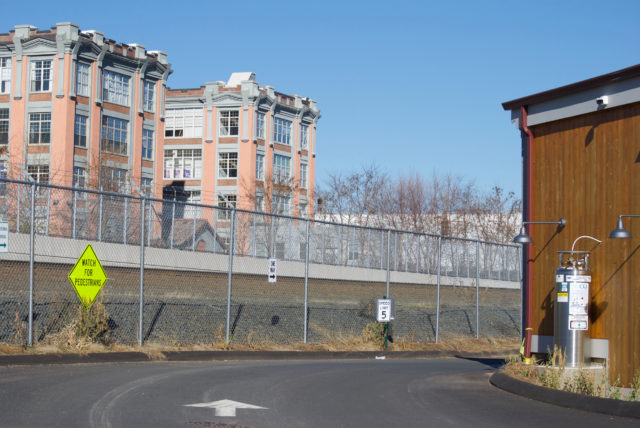
Here in Hartford, the redesign of Main Street that we have been begging for has finally made it to the preliminary design stage. The improvements would cost around $10M — so half of New London’s skybridge — but serve far more people for a longer distance; yet, there is still a tone of apology coming from a project consultant, and not for the right reasons. He explained to the paper that the project does not have to happen all at once and can roll out in various stages.
They feel the need to convince the public that this price tag is acceptable because for so long people who do not live in Hartford or use our streets (except during rush hour or for the occasional event at The Bushnell) are the ones whose squawks get heard.
Let me explain what Main Street looks like for the other 23 hours each day. It’s vast. When drivers are presented with wide open spaces, guess what happens? Motorists travel at speeds that are unsafe in a city where people are walking and biking.
The project area is from State House Square to South Green, so would cover most of downtown’s section of Main Street — as it should. It’s where we have three museums (two history, one art), the main public library, City Hall, restaurants, and housing — among other things. If the plan materializes, we could have a roundabout, mid-block crosswalks, and a two-way bicycle lane. Street trees and planters are also mentioned, and much needed on several blocks.
This plan does not nearly do enough — and that’s what consultants should be apologizing for — but a year ago I was in a meeting where residents were told that there was no way to install bike lanes on Main Street. At that meeting, I voiced my sense of shame that a city was unwilling to respect all of its residents’ safety, particularly on its literal Main Street. If we’re not willing to keep Main Street well, what are we doing?
We’re making progress, but the plan is not robust, and the reason for that is learned timidity and a refusal to decenter the motorist. There is a weird red herring in the mix because the rest of us are left to fight over motorists’ scraps, so the transit people are worried that buses will lose space due to the bike lanes. It’s understandable. Already drivers strand cars in bus stops and there’s little bus drivers can do, legally and while sticking to schedule, besides lay on the horn. But bus riders, pedestrians, and cyclists are all on the same team here, and the sooner we recognize that, the sooner we will see substantial and beneficial changes.
Hartford does not dream big enough.
Look at the expansion of patio seating that we have seen during the pandemic.
Great idea, but the implementation has not always been thoughtful when it comes to how people who had previously used that space would be able to continue doing so. The thinking, too often, went no further than “how do we get as many diners into this space as the protocols will allow,” and it shows. I have observed restaurant sprawl that does not take into account that people passing by will want space from unmasked diners, a level surface to walk on, and enough room to use a wheelchair or push a stroller. This is all irritating, but unlike a $20M skybridge, someone’s poorly designed pandemic patio can be rearranged in about an hour.
Sure, Pratt Street and a sliver of Ann and Allyn Streets have been opened for people during the pandemic. When there are games again at the civic center, will Ann and Allyn be allowed to remain covered in tables? There are restaurants on Trumbull and Main that would have (and could still) benefit from substantial street closures so they can expand seating without obstructing the sidewalk.
Neighboring West Hartford has repurposed large portions of two busy roads so that restaurants have a shot at surviving. There has been no carmageddon.
New York City has opened around 100 miles of its streets, including parts of Broadway, Canal, and Rivington. . . so not just dinky side streets.
What’s interesting is that even those who typically balk at making anything less convenient for motorists seem to support these changes. Keeping the local economy alive is considered a worthy cause. Keeping pedestrians and cyclists alive, however, is not something everyone is sold on, yet.
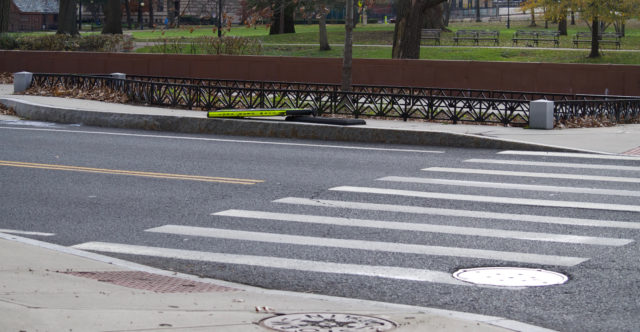
MAP
¹ I am using the phrase “at least” when it comes to total dead pedestrians and cyclists because there were others who suffered significant injuries and whose subsequent passing may have gone unreported by the news. Does this happen? Yes. More often than we should accept. A lot of that has to do with what media outlets have determined is newsworthy at the time, but the language frequently used to describe injuries is misleading; often reporters take a cop’s assessment of a pedestrian’s injuries as the truth. Additionally, there are occasions when motorists collide with pedestrians and cyclists, and this is only known through databases as it was not reported ever by the media. These discrepancies make it likely that there are other deaths occurring that are neither reported by the news or recorded in databases.
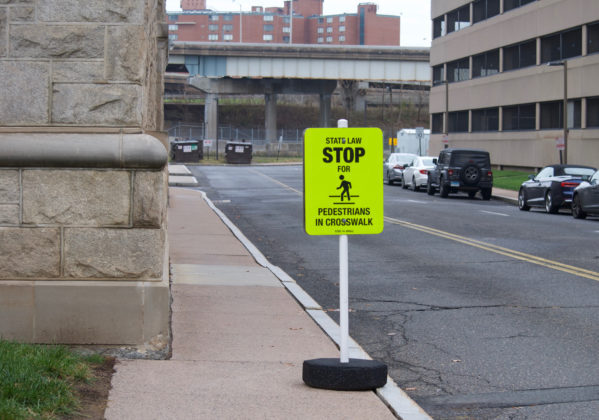
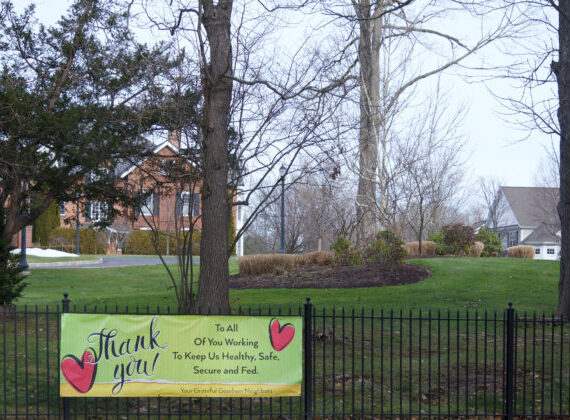
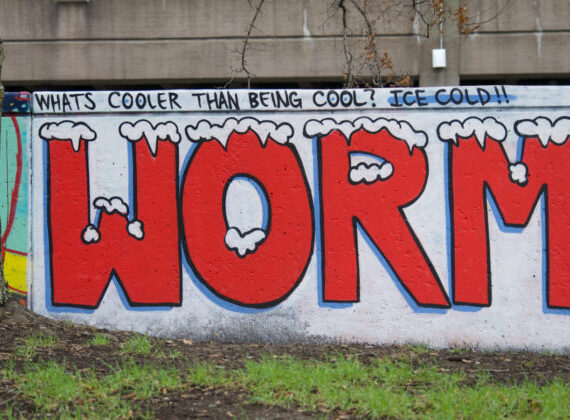
Judy Proctor
Kerri, thank you for your work. FYI, the pedestrian who was killed in Fairfield was crossing the entrance to I-95 not I-91. It was exit 25.
Our son, Charlie Proctor, was killed in May by a car while in Arlington,Ma, ten minutes from his home. Blame the victim is the mantra.
We live in Fairfield where there have been two pedestrians deaths this year. Can someone explain why Helsinki (population 1.5M) had NO pedestrian or cycling deaths in 2019 and Fairfield (population 60,000) has had two?
Kerri Provost
Judy,
I’m sorry for your loss. It’s mind-boggling and maddening how many people have been needlessly injured and killed, and as a whole, it seems folks shrug this off as an acceptable price to pay for convenience.
Transportation Co-Chair Plans Aggressive Pedestrian Safety Agenda - We-Ha | West Hartford News
[…] has been a dangerous year to be a pedestrian in Connecticut. According to Real Hartford blogger Kerri Provost, at least 52 pedestrians and six cyclists have died after being struck by vehicles in the state […]
Ofer Eitan Announced: Transportation Co-Chair Plans Aggressive Pedestrian Safety - Jonathan Cartu - Moving & Transportation Services
[…] has been a dangerous year to be a pedestrian in Connecticut. According to Real Hartford blogger Kerri Provost, at least 52 pedestrians and six cyclists have died after being struck by vehicles in the state […]